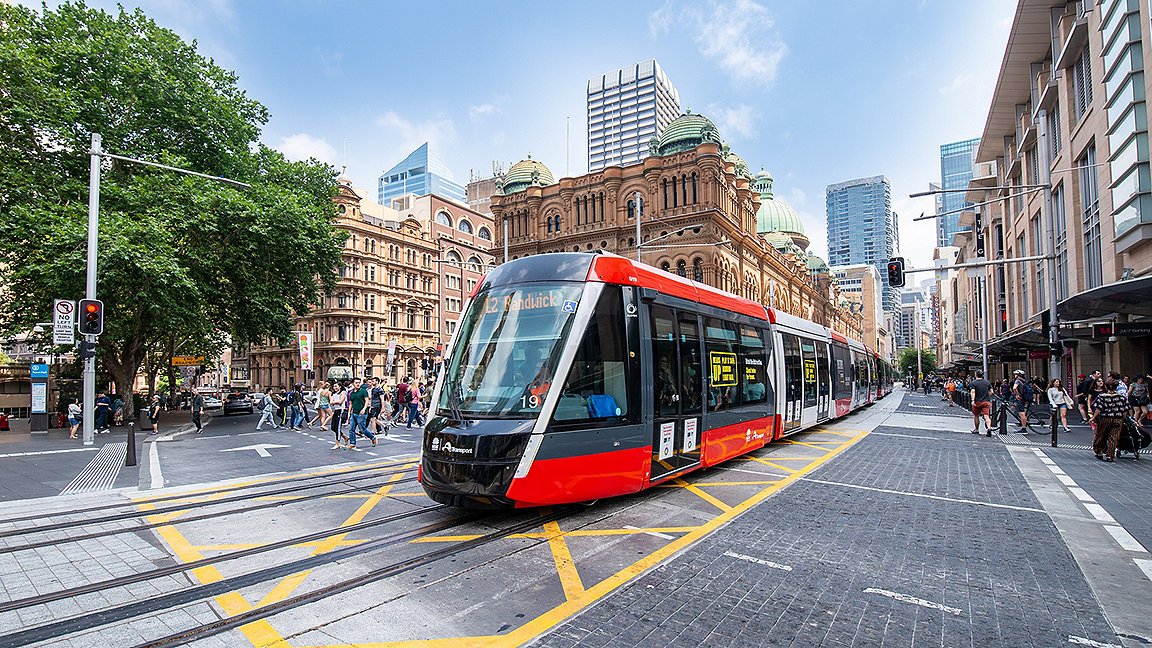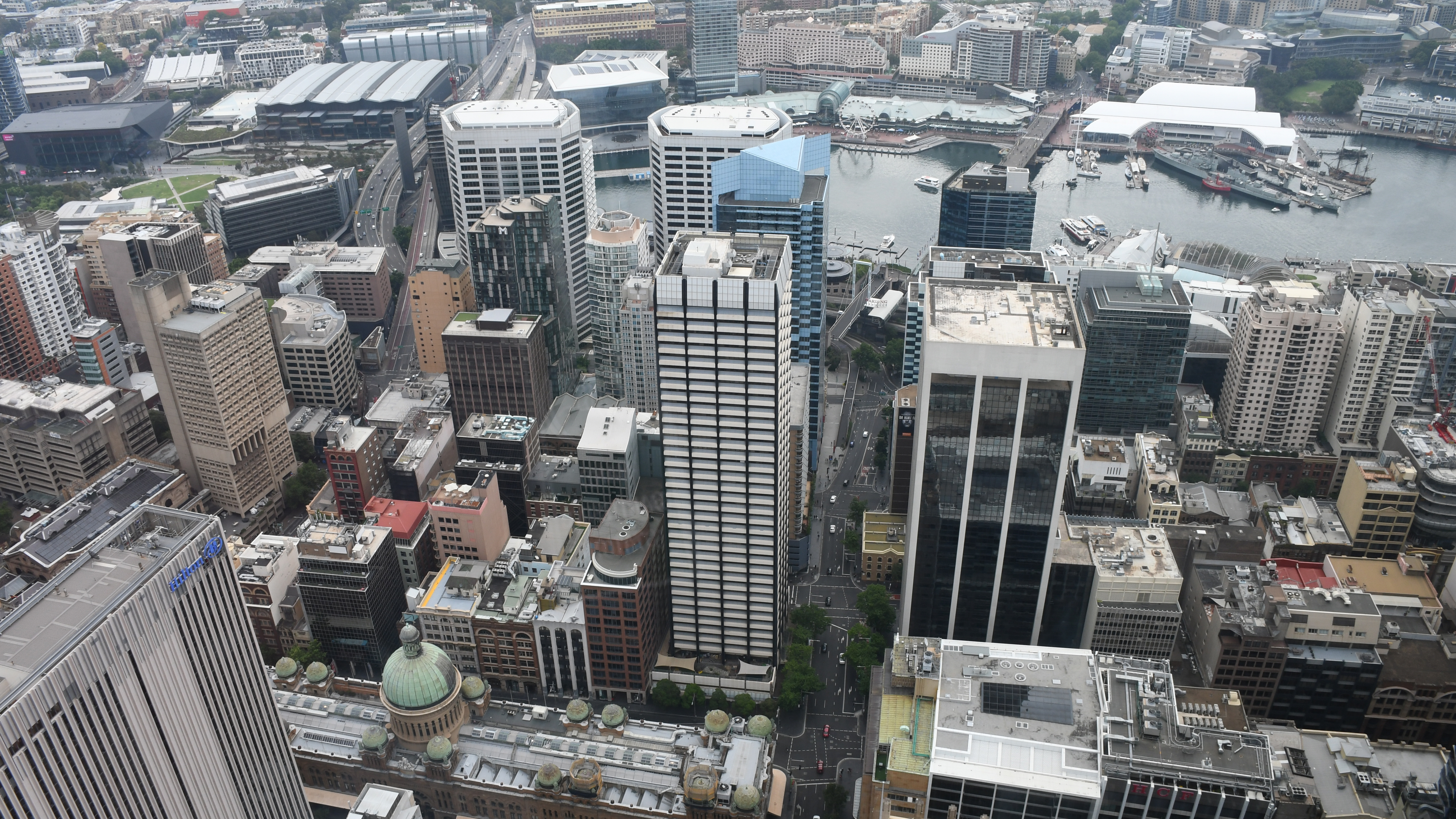
As we learn to live with COVID-19, there is a gradual return to previous patterns of work, commuting and consumption worldwide. But with the Property Council of Australia reporting a vacancy rate of 10.1% in commercial and retail properties in Sydney in July 2022, we need to understand whether this is a permanent or temporary trend – as well as considering the potential for alternative uses.
To identify some innovative options for underused and vacant spaces, our University of Technology Sydney (UTS) research team has devised the Sustainable Temporary Adaptive Reuse (STAR) re-activation strategy.
Funded for three years by the City of Sydney, the STAR toolkit project will explore low-cost, sustainable interventions for existing buildings, addressing economic, social and environmental stress to improve the built environment. It aims to develop a toolkit of resources that stakeholders can employ to access underused and vacant space in commercial property.
RICS members working in valuation, property and facilities management, building surveying or commercial real estate are directly involved in that they provide professional advice to building owners, investors or leaseholders who want to use such space on relatively short-term bases.
Project responds to post-pandemic vacancies
The project was born from a discussion among ourselves about the impact COVID-19 was having on Sydney's central business district (CBD).
In determining whether changes in commercial occupancy are permanent or temporary – and if the latter, how long they might last – we decided that if we gathered experts and stakeholders together, we could comprehensively assess the problem. This would inform which buildings would need to change, where they are located, and what sort of changes would be suitable.
While people are returning to work, shop and use entertainment facilities in Sydney's CBD now lockdowns have ended, activity is not back at pre-COVID-19 levels; vacancies in retail premises and cafes are obvious. These businesses rely on office workers, students and national and international visitors who are not yet pounding the streets.
As a result, there was much stakeholder interest in the first STAR workshop held at the UTS in May 2022. This assessed the issues that arose as a result of COVID-19, new ways of working and the effect of fewer visitors to the district.
Pandemic stalls Sydney growth
The keynote speaker at the workshop, SGS Economics & Planning CEO Alison Holloway, emphasised the economic and social impact of COVID-19 on Sydney.
She noted that Sydney's CBD and inner-city suburbs were home to 255,000 jobs or 55% of employment in the city before the pandemic. The City of Sydney was also responsible for 10% of Australia's national GDP, which had been forecast to grow by 50% in the coming 20–30 years.
Since the COVID-19 lockdowns, however, almost half of Australians work from home, and three to four years of population growth across Australia has been lost because migrants and international students had been unable to move to the country. Despite this, Holloway argued, there are opportunities for change and innovation as new businesses now have the space to establish themselves.
She also observed that experts from the property, planning, government and policy-making, education and cultural sectors were attending the workshop 'because they don't know what the future holds'.
Among these experts was the second speaker, director of corporate affairs at urban policy think-tank the Committee for Sydney (CfS) Matt Levinson. He too recognised the unparalleled disruption that COVID-19 had caused in the city, and outlined CfS's vision in response.
Committee vision focuses on flexible uses
Levinson explained that the CfS works with the Greater Cities Commission looking at the harbour CBD, Greater Parramatta and the Badgerys Creek Aerotropolis.
The CfS's aim is to connect Sydney to the other regional cities of Wollongong and Newcastle as well as the main business district of Parramatta, because greater public transport connectivity can enhance economic and social development. With unaffordable housing in the city itself driving people further out, daily commuting to the workplace is less desirable – especially where people can work from home. Sydney's high-speed rail link between these locations is close to completion, though, and by reducing travel times is designed to encourage more people back into the city.
Levinson said the current situation represents 'a window of opportunity that may be short and may close quickly'. Historically, there has been little vacancy in the commercial stock in Sydney's CBD, making it hard for new businesses to find suitable property. COVID-19 has changed this by making more space available. He added that businesses, workers, policy-makers and real-estate professionals have together realised that jobs need to be closer to where they live as people are less happy to commute long distances to work.
Upgrades to the transport network, such as the high-speed rail link, are improving movement around Greater Sydney, Levinson went on. In the context of zoning, CfS has mapped existing rail and planned new metro station locations and defined the different urban centres as:
-
CBDs
-
hubs of sport, entertainment and business activity
-
suburban areas identified as in need of upgrade
-
new suburban greenfield developments as Sydney expands.
Levinson quoted the Arup report Commission into the Future of Sydney CBD: Recommendations and actions, which advocates street-level, first- and second-floor uses, the encouragement of temporary uses (i.e. having a tenant or tenants) and supporting flexible leases. The lowest three floors of a building have the most visibility from street level (i.e. their lights are on or there are people looking out of windows) and provide a sense of vibrancy. If the lowest three floors of a building are empty, the atmosphere is quiet and less dynamic.
The Arup report recommends:
-
repurposing underused spaces to enable inclusive, multigenerational recreation
-
piloting conversion of hotels into diverse housing
-
building affordable, flexible crafts and creative spaces across the CBD
-
investing in world-class digital connections across the district
-
changing building requirements to allow flexible uses
-
encouraging reuse of assets and making efforts to meet net-zero targets.
The CfS's Unleashing Sydney's Innovation Economy report concluded that the City of Sydney needs to make it easier to start new companies, create new jobs and expand spaces for start-ups, for new and young companies and for craftspeople, or makers.
In addition, Sydney needs faster internet and upgraded innovation areas. Other CfS working groups have focused on travel, rethinking station precincts, the future for Sydney, the city's agenda, and mapping high streets. Levinson concluded: 'Let's not just think about the inner city, but free up space closer to where people live, too.'
'With unaffordable housing in the city itself driving people further out, daily commuting to the workplace is less desirable – especially where people can work from home'
Collaborating to envisage city's future
The workshop aimed to foster engagement between participants, encouraging interdisciplinary thinking on sustainable ways to make best use of vacant office and retail space.
The first workshop activity adopted the Futures Wheel methodology, where an issue's primary, secondary and tertiary impacts are explored. In this case, participants considered COVID-19 and its effect on Sydney's CBD.
Once all the impacts were identified, they were coded as social, economic, environmental, legal, political or technological. This exercise enabled the researchers and participants to explore the pandemic's impacts from all perspectives.
The keynote speakers identified many of the issues that had prompted the STAR toolkit project, and the potential for positive changes – such as new types of short-term lease or leasing to different kinds of occupier – that could be explored at future workshops. For example, we are working on a guide detailing actions that stakeholders can follow to secure a space to lease.
We are also preparing a feasibility tool to help stakeholders and potential users identify suitable premises and work out how to approach owners and property professionals to negotiate short-term use, thus minimising vacancy. Examples of potential new uses include dog day care businesses, small rooftop urban farms or other new enterprises that would have been unable to find affordable space to rent before COVID-19, when everyone worked in the office five days a week.
Our next workshop in November 2022 will focus on developing this feasibility tool, being informed by knowledge exchanges at the previous event. We will also explore the advantages and disadvantages of new uses for existing buildings; the way STAR interacts with environmental, social and governance criteria to affect the value of buildings, including offices; and share a draft of the STAR guide.
Related competencies include: Property management, Strategic real estate consultancy

